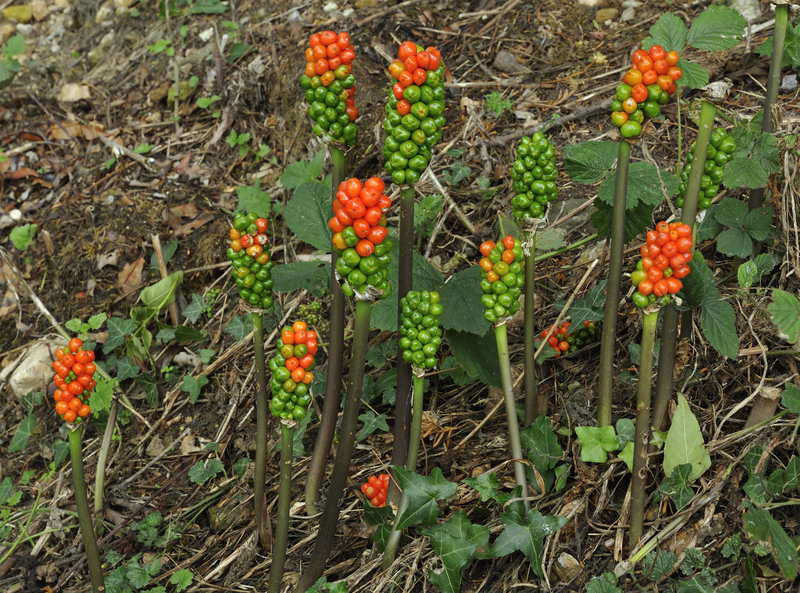Protecting Plants from the Cold Winter's Embrace
Posted on 14/09/2025
Protecting Plants from the Cold Winter's Embrace: A Comprehensive Guide
As the chill of winter approaches, gardeners around the world shift gears, trading in trowels for insulated gloves and mulch bags. Protecting plants from the cold winter's embrace is both an art and a science, a crucial step to ensure the vitality and longevity of your beloved greenery. In this in-depth, SEO-optimized article, we'll explore effective strategies, practical tips, and advanced techniques designed to help hobbyists and experts alike shield their plants from winter's icy grasp.
Why Is Winter Protection for Plants Important?
Frost, freezing temperatures, and harsh winds can have devastating effects on unprotected plants. Cold bursts can cause cellular damage, dehydration, and even complete loss of certain vegetation. By employing sound plant winter protection methods, you can:
- Prevent frostbite and structural plant damage
- Maintain soil health and root viability
- Reduce pest and disease vulnerability
- Secure early spring bloom and growth
What Types of Plants Need Winter Protection?
Not all plants are created equal when it comes to protecting plants from cold during winter. Some, like hardy perennials or native species, can withstand the frost, while tender annuals, tropical plants, and young saplings are more vulnerable.
- Tender Annuals: These complete their life cycle in one season and are usually most sensitive to frost.
- Tropical and Subtropical Plants: Such plants are designed for warmth and will often not survive harsh conditions without additional care.
- Newly Planted Trees and Shrubs: These lack the established roots necessary to weather extended freezes.
- Container Plants: Potted plants face extra risk because their roots are less insulated.

How Cold Affects Your Plants
Before learning how to shield plants from winter's chill, understanding how cold impacts plant physiology is vital.
- Frost Heaving: As soil freezes and thaws, it can push plants out of the ground, exposing roots to cold damage.
- Desiccation: Dry winter winds and frozen ground limit water uptake, causing plants to dry out.
- Cellular Freezing: Extreme cold crystallizes water inside plant cells, leading to cell death.
- Bark Splitting: Rapid temperature changes cause bark expansion and contraction, which may split delicate trunks.
Essential Strategies for Protecting Plants from Winter's Embrace
1. Mulching: The Winter Blanket
Mulching is one of the most effective tools in the gardener's arsenal for winter plant protection. A thick mulch layer around the base of plants acts as an insulator, moderating soil temperature and retaining moisture. Mulch also helps prevent weeds, erosion, and frost heaving.
- Best Mulch Materials: Straw, pine needles, shredded bark, and compost are excellent choices for retaining heat.
- Application: Apply 2-4 inches around the plant base, extending outward to the drip line. Avoid piling mulch directly against stems to prevent rot.
2. Covering and Cloche Protection
Just as we wrap ourselves in warm coats, plants benefit from layers of protective fabric or cloches during freezing spells.
- Frost Cloths and Burlap: Breathable, lightweight sheets placed over sensitive plants help trap ground heat and ward off frost.
- Cloches and Cold Frames: These small greenhouses or transparent domes create microclimates, ideal for seedlings and small ornamentals.
- Tip: Drape covers before sunset and remove during sunny days to avoid overheating and ensure air circulation.
3. Water Wisely
Hydrated plants fare better in the cold. Moist soil retains more heat than dry soil, lessening the risk of sudden temperature dips.
- Watering Before Freeze: A deep watering prior to a freeze helps plants stay firm and cells plump.
- Avoid Waterlogging: Excessive water can freeze around roots, so ensure proper drainage.
- Morning Watering: Watering early in the day gives roots time to absorb moisture before temperatures fall.
4. Windbreaks and Positioning
Cold winter winds strip moisture from plant leaves and stems, intensifying stress. Setting up windbreaks can shield vulnerable plants from these drying gusts.
- Temporary Barriers: Erect fences of burlap, plastic, or wooden slats on the windward side of gardens or beds.
- Plant Grouping: Cluster containers and tender crops near walls or in sheltered corners to capitalize on radiant heat and wind protection.
5. Insulating Pots and Containers
Container plants are particularly susceptible since their roots are exposed on all sides. To guard against winter's frost:
- Move Indoors: Where possible, relocate pots to garages, greenhouses, or sunny porches.
- Wrap Pots: Bubble wrap, burlap, or old blankets can be used to insulate the sides of containers left outdoors.
- Double Potting: Place the plant pot inside a slightly larger one and fill the space with moss or straw for extra insulation.
Special Focus: Protecting Trees and Shrubs from Winter Damage
Wrapping and Shielding Young Trees
Newly planted or thin-barked trees, such as maples and fruit varieties, are especially vulnerable to winter injury. Here's how you can protect them:
- Wrap Trunks: Use tree wraps or spirals to shield against sunscald and frost cracks.
- Add Mulch Rings: Form a protective mulch donut around the base, leaving a gap to prevent bark rot.
- Install Guards: Use plastic tubes or mesh to deter rodents and small animals from gnawing on bark during scarce winter months.
Pruning: Timing Is Everything
Pruning is best done in late winter while plants are still dormant but before new growth emerges. Proper pruning helps:
- Remove weak or damaged branches that could break under snow or ice weight.
- Prevent disease spread by getting rid of infected limbs before spring growth.
Advanced Techniques for Plant Winterization
Heated Greenhouses and Cold Frames
For enthusiasts looking for more advanced methods of protecting garden plants from winter cold, investing in a heated greenhouse or cold frame can be game-changing.
- Greenhouses: Allow cultivation of frost-sensitive species year-round.
- Cold Frames: Smaller, hinged structures help to extend the growing season for vegetables and flowers.
Anti-Desiccant Sprays
Winter often causes desiccation, especially in evergreens and broadleaf shrubs. Anti-desiccant sprays form a thin, waxy coating on leaves, locking in moisture and reducing water loss through evaporation.
- When to Apply: Only on dry days above freezing temperatures.
- Reapply: Every four to six weeks through winter.
Soil Amendments and Winter Feeding
Fortifying your soil before winter can give your plants a crucial edge. Compost, well-rotted manure, and slow-release fertilizers nourish roots, bolster resistance to cold, and promote strong spring growth.
- Do's: Add organic matter in fall to encourage microbial activity and enrich the soil.
- Don'ts: Avoid high-nitrogen feeds late in the season, as they can encourage soft, frost-vulnerable growth.
Common Mistakes to Avoid When Protecting Plants in Winter
- Over-Mulching: Too much mulch can smother plants and cause rot. Stick to recommended amounts.
- Ignoring Drainage: Poorly drained soils freeze harder and damage plant roots. Amend with organic matter or sand if necessary.
- Leaving Covers On: Fabrics left on during sunny days can overheat and encourage fungal issues.
- Forgetting to Check for Pests: Voles, rabbits, and rodents are notorious for seeking food and shelter near your protected plants.
Protecting Indoor and Houseplants from Winter Stress
Managing Light and Humidity
The threats of winter aren't limited to the outdoors. Indoor plants face reduced sunlight, dry air, and fluctuating temperatures.
- Supplement Light: Use grow lights or position near south-facing windows.
- Maintain Humidity: Group plants, use pebble trays, or run a humidifier to counteract dry indoor air.
- Avoid Draughts: Move plants away from cold windows, doors, and heat vents.
Creating a Winter Plant Protection Checklist
Stay one step ahead by crafting a personalized winter plant protection plan. Use this checklist every fall:
- Review all garden plant species and their cold hardiness requirements
- Inspect and mulch around the base of vulnerable plants
- Stock up on frost cloths, burlap, and cloches
- Set up windbreaks or temporary shelters for exposed beds
- Move or insulate potted plants
- Prune damaged or weak branches from trees and shrubs
- Apply anti-desiccant sprays as needed
- Prepare indoor plants for reduced sunlight and humidity levels

Frequently Asked Questions About Plant Winter Protection
Should I water my plants in winter?
Yes, but sparingly. Water only when the soil is dry and above freezing to prevent root rot and maximize frost resistance.
Can I use plastic sheets to cover my plants?
Use plastic only as a temporary, emergency measure, and never allow it to touch foliage directly, as it can cause frost burn. Fabrics like burlap or horticultural fleece are preferable.
How do I know if my plant needs winter protection?
Research your plant species and your local hardiness zone. Anything labeled above your USDA zone might need extra help to survive harsh winters.
Summary: Safeguard Your Green Sanctuary from Winter's Grasp
Protecting your plants from the cold winter's embrace is a responsibility and a reward. With a bit of forward planning, knowledge, and ongoing care, your garden can weather even the harshest of winters and spring back to life in the new season. Integrate these comprehensive plant winterization techniques, steer clear of common mistakes, and celebrate the beauty of a resilient, thriving landscape all year round.
For more in-depth guides and expert tips on winter plant protection, be sure to bookmark this article and explore our related resources on keeping your garden healthy in every season!

